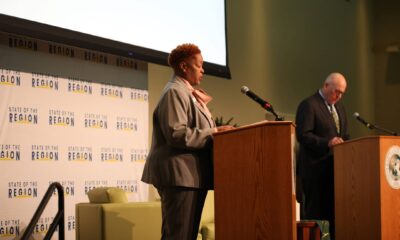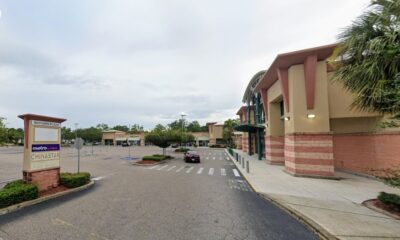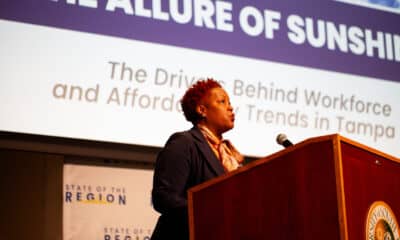Impact
Tampa Bay Partnership CEO: New report is a reality check on racial equity

The Tampa Bay area lags comparable cities nationwide when it comes to the digital divide.
The eight-county Tampa Bay area is at the bottom of the list of 20 cities in terms of percentage of households with a computer and broadband internet subscription, a new study by the Tampa Bay Partnership said. In Seattle, 91.9 percent of households have a computer and internet access. In Tampa Bay, less than 83 percent of households have it, and among Black households, only 71 percent have broadband access.
The digital divide is one of several areas where the 2020 Regional Equity Report found deep disparities between the area’s Black and white residents. Racial gaps were found in unemployment, the median wage, poverty and more than a dozen other factors.
“We hope the community understands, especially the leadership of the community, that we have a structural and a systemic problem within Tampa Bay that is affecting a very significant segment of the population,” Rick Homans, the partnership’s president and CEO, said during a media briefing. “This is a reality check. We’ve seen the protests. We’ve seen the demonstrations. These are the numbers and the data that is driving the passion and the cries for change. We wanted to make sure we were documenting this in a thorough and transparent and visible way.”
The new study is a companion to the Regional Competitiveness Report, an annual look at how Tampa Bay compares to 19 peer cities, but the equity report dives deeper into racial gaps. The Tampa Bay Partnership, a coalition of regional business leaders, collaborated with the Community Foundation of Tampa Bay and United Way Suncoast to produce the report.
The Regional Competitiveness Report did not previously look at the digital divide, but will do so going forward, said Dave Sobush, director of policy and research for the Partnership. It’s a key measure because modern life requires digital access and basic digital skills. Households with adequate technology and broadband access are better equipped to participate in activities ranging from school to telemedicine to working from home, and the people in those households will have higher levels of digital literacy, the Regional Equity Report said.
Another key metric in the Regional Equity Report is unemployment. Throughout Tampa Bay, the unemployment rate for Black workers was 4.4 percentage points higher than the rate for white workers.
The unemployment data was collected prior to the Covid-19 pandemic, Sobush said. Initial unemployment claims after the pandemic began found no clear gaps between the races, he said. But workers also had to have access to a computer and internet to file for unemployment assistance in the first few weeks of the pandemic, he said.
“With the disconnection in digital access that we see in this equity report, we can reasonably surmise that it’s likely the pandemic has affected workers of color at a greater rate,” Sobush said.
The unemployment gap the study found is a warning sign, and the pandemic takes it to “high alert status,” Homans said.
During the media briefing, Sobush highlighted several other metrics from the Regional Equity Report.
Median wage: The median wage for Black workers is $16.42 in Tampa Bay, while it is $20.90 for white workers.
Poverty: Ten percent of white residents in Tampa Bay have income below the poverty line. Black residents are more than twice as likely to live in poverty; 24.3 percent of Black residents have income below the poverty line.
Working poor: About 3 percent of Black residents in Tampa Bay who worked full-time in the past 12 months had family income below the poverty line, compared to 1.2 percent of white residents.
The Partnership will present a detailed look at the findings of the 2020 Regional Equity Report during a virtual State of the Region Community Forum on Thursday, Sept. 3 at 12 p.m. Following the presentation of the data, Homans will moderate a panel discussion with Braulio Colón, vice president of Florida Student Success Initiatives for the Helios Education Foundation; Yvette Lewis, president of Hillsborough County Branch of the NAACP; and Bemetra Simmons, chief strategy and operations officer at United Way Suncoast.
Click here to register for the forum.








Carl Lavender
August 21, 2020at3:18 pm
The work of the Tampa Bay Partnership, under the Leadership of Rick Homans, is necessary, vital and timely. This report is the new Business Model for Economic Sustainability into the next decade. It’s just the right thing to do and it’s about time. Keep Moving Forward. Peace.